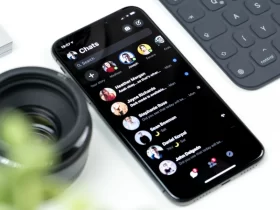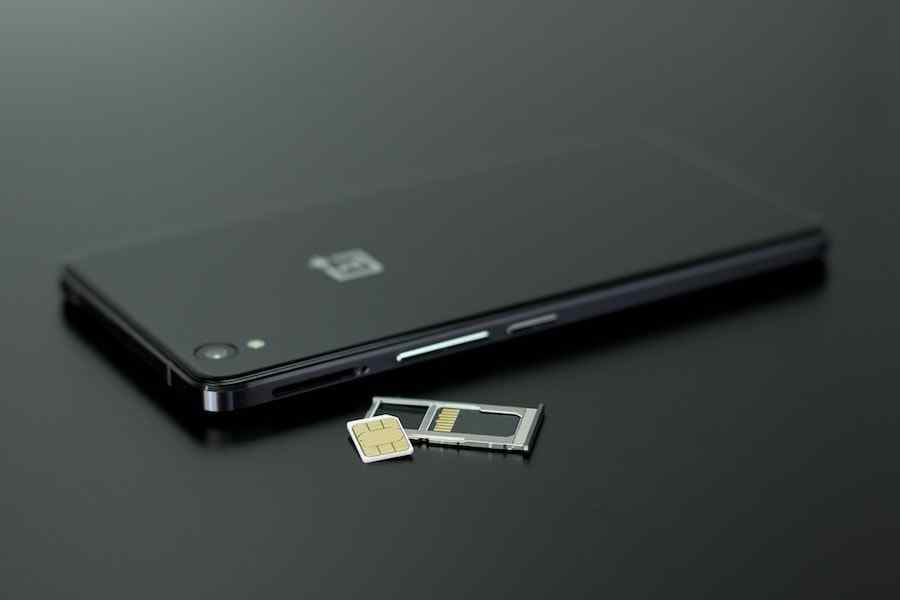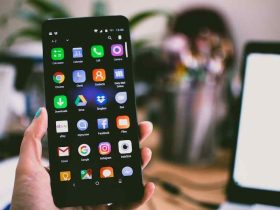In our increasingly connected world, the humble SIM card plays a vital role in ensuring seamless communication through our mobile devices. However, not all phones are created equal, and some find themselves on the wrong side of the law. These blacklisted phones, often with a tainted history, raise intriguing questions about what happens if we dare to insert our SIM card into them.
In this article, we aim to unravel the mysteries surrounding blacklisted phones and shed light on the potential repercussions of combining them with our trusted SIM cards. We will explore the intricate relationship between SIM cards and mobile devices, delve into the concept of blacklisting, and examine the implications for those who dare to venture into this forbidden territory.
What Happens If I Put My Sim Card In A Blacklisted Phone?
If you put your SIM card in a blacklisted phone, you may encounter various consequences and limitations. A blacklisted phone is one that has been reported as stolen, lost, involved in fraudulent activities, or has unpaid bills. When you insert your SIM card into such a device, it may initially connect to the network, but your access to services will likely be restricted. You may find yourself unable to make or receive calls and text messages, and you may have limited or no access to mobile data services. Additionally, features like VoLTE and Wi-Fi calling may not work properly, further restricting your communication capabilities. It’s important to note that using a blacklisted phone can have legal and ethical implications. It may violate the terms of service and carrier agreements, and unknowingly using a blacklisted phone can lead to undesirable consequences. Therefore, it is advisable to refrain from using blacklisted phones and to ensure the legitimacy and status of any device before inserting your SIM card.
What Is Blacklisted Phones?
Blacklisted phones are devices that have been reported as stolen, lost, or involved in fraudulent activities, leading to their inclusion in a blacklist maintained by mobile network operators. When a phone is blacklisted, it means that its unique identifier, such as the IMEI (International Mobile Equipment Identity) or MEID (Mobile Equipment Identifier), is flagged as ineligible for network connectivity.
There are several reasons why a phone may end up on a blacklist. If a device is reported as stolen or lost by its owner, the owner can contact their mobile network operator to have the phone’s IMEI or MEID blacklisted. This action aims to prevent the stolen or lost phone from being used on any network, rendering it essentially useless to unauthorized individuals.
Another common reason for blacklisting is related to unpaid bills or financial obligations. If a phone user fails to fulfill their payment obligations, the mobile network operator may blacklist the device associated with that account. This measure encourages users to settle their outstanding dues and discourages the use of services without proper payment.
In cases of fraudulent activity, where a phone is used for illegal purposes, such as identity theft or scamming, it may be reported to the authorities, who can work with mobile network operators to blacklist the device.
Once a phone is blacklisted, its connectivity is severely restricted. It will generally be unable to connect to any mobile network, making it nearly impossible to make or receive calls, send or receive text messages, or access mobile data services. While some blacklisted phones may still connect to emergency services, their functionality is significantly limited, making them unsuitable for regular use.
It is important to note that blacklisted phones not only pose challenges for the individuals trying to use them but also impact the original owners. Reporting a phone as stolen or lost can assist in recovering the device or filing an insurance claim. However, dealing with a blacklisted phone that was fraudulently obtained or involved in criminal activities may require additional legal actions.
To avoid the complications associated with blacklisted phones, it is recommended to verify the legitimacy and status of a device before purchasing or using it.
What Are The Common Reasons For A Phone To Be Blacklisted ?
There are several common reasons why a phone may be blacklisted by mobile network operators. These reasons include:
Stolen or Lost Phones: If a phone is reported as stolen or lost by its owner, the owner can contact their mobile network operator to have the phone’s unique identifier, such as the IMEI or MEID, blacklisted. This prevents the stolen or lost phone from being used on any network, rendering it useless to unauthorized individuals.
Unpaid Bills or Financial Obligations: Failure to fulfill payment obligations, such as unpaid bills or outstanding financial obligations, can result in a phone being blacklisted. Mobile network operators may blacklist the device associated with an account to encourage users to settle their outstanding dues and prevent unauthorized usage.
Fraudulent Activity: Phones involved in fraudulent activities, such as identity theft, scamming, or other illegal activities, can be reported to the authorities and subsequently blacklisted. This measure helps protect individuals and prevents further misuse of the device for criminal purposes.
Lease or Contract Violations: In some cases, phones obtained through lease or contract agreements may be blacklisted if the terms of the agreement are violated. This can occur if the device is not returned or if there are breaches of the contract terms.
Insurance Fraud: If a phone is fraudulently reported as lost or stolen to claim insurance, it can lead to the device being blacklisted. This measure aims to prevent false insurance claims and deter fraudulent activities.
Is There Any Risk To Put A Sim Card In A Blacklisted Phone?
Yes, there are risks associated with putting a SIM card in a blacklisted phone. Here are some potential risks:
Restricted Network Access:
When you insert a SIM card into a blacklisted phone, the phone’s connectivity to the cellular network may be limited or completely blocked. You may experience difficulties in making or receiving calls, sending or receiving text messages, and accessing mobile data services. This can severely impact your ability to use the phone for its intended purposes.
Limited Functionality:
Blacklisted phones often have restricted functionality. Certain features, such as VoLTE (Voice over LTE) or Wi-Fi calling, may not work properly or be unavailable. This can further limit your communication options and hinder the phone’s usability.
Security Risks:
Using a blacklisted phone poses potential security risks. These devices may not receive software updates and security patches, leaving them vulnerable to hacking, malware, and other cybersecurity threats. Additionally, since blacklisted phones are often obtained through illegal means or associated with fraudulent activities, using them may expose you to legal consequences or involvement in illegal activities.
Legal and Ethical Implications:
Knowingly using a blacklisted phone can have legal ramifications. It may violate the terms of service and carrier agreements, which can lead to penalties or legal actions. Ethically, using a blacklisted phone that was reported as stolen or involved in fraudulent activities can contribute to the perpetuation of illegal actions and harm others who have been victimized.
Difficulty in Resolving Issues:
If you accidentally use a SIM card in a blacklisted phone and later realize the situation, resolving the problem can be challenging. Mobile network operators may provide limited support or assistance for blacklisted devices, and you may face difficulties in unlocking or rectifying the issue. This can result in financial loss if you are unable to use the phone or services effectively.
Steps To Take If You Accidentally Use A Sim Card In A Blacklisted Phone
If you accidentally use a SIM card in a blacklisted phone, here are 10 steps you can take to address the situation:
- As soon as you become aware that you have inserted your SIM card into a blacklisted phone, acknowledge the problem and take immediate action.
- Confirm the blacklisted status of the phone by contacting your mobile network operator. Provide them with the phone’s IMEI or MEID number, and they can inform you if the device is indeed blacklisted.
- Reach out to your mobile network operator’s customer service or support hotline. Explain the situation, including the accidental use of a SIM card in a blacklisted phone. Seek their guidance on how to proceed.
- The mobile network operator will provide specific instructions based on their policies and procedures. Cooperate with their guidance to resolve the issue effectively.
- If the phone is permanently blacklisted or cannot be rectified, inquire about the possibility of replacing the device. Depending on the circumstances, they may offer options for replacing the blacklisted phone with a legitimate one.
- If the phone is blacklisted due to unpaid bills or contract violations, discuss the possibility of unlocking it by settling any outstanding payments or fulfilling contractual obligations.
- In complex cases, it may be helpful to consult with a professional, such as a mobile device technician or legal advisor, to explore potential solutions or navigate any legal implications.
- If you need to stop using the blacklisted phone, ensure that you securely back up and transfer any important data, such as contacts, photos, or documents, to a different device.
- If you inadvertently purchased a blacklisted phone, report the incident to the relevant authorities or seller, providing them with the necessary information. This step can help prevent further fraudulent activities and protect other potential buyers.
- Use this incident as an opportunity to be more cautious in the future. Before purchasing or using a phone, verify its status and legitimacy to avoid similar issues and associated risks.
Final Words
In conclusion, the consequences of putting a SIM card in a blacklisted phone can be significant. It can result in restricted network access, limited functionality, security risks, and legal and ethical implications. It is crucial to be aware of these risks and take appropriate steps to mitigate them.
If you accidentally use a SIM card in a blacklisted phone, it’s important to recognize the issue, verify the phone’s status, and contact your mobile network operator for guidance. Follow their instructions, consider device replacement or unlocking options, and protect your personal data. Reporting the incident, if applicable, can help prevent further fraudulent activities.
















